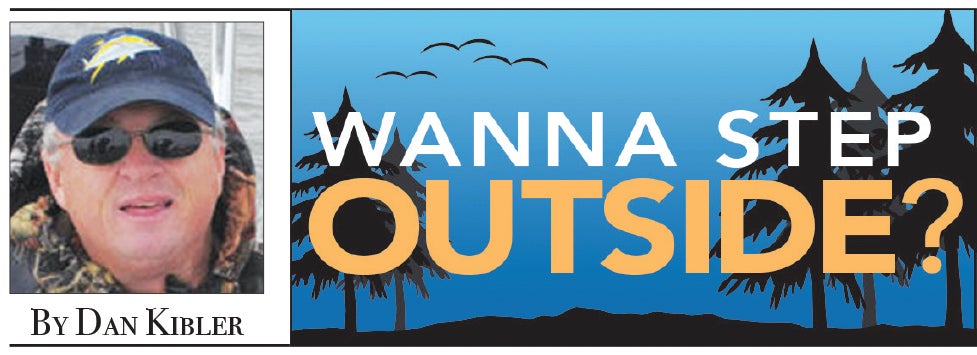Expect new rules: chronic wasting diseases confirmed in Yadkin County deer
Published 10:09 am Thursday, April 14, 2022
|
Getting your Trinity Audio player ready...
|
Let’s get the basics over with in one sentence.
Deer hunting in most of Northwest North Carolina will never be the same.
If that wasn’t obvious two weeks ago when the N.C. Wildlife Resources Commission announced that a buck killed this past December in Yadkin County had tested positive for chronic wasting disease – the bane of deer and wildlife managers everywhere – it became official last Thursday, when the commission discussed steps needed to pass a handful of regulations aimed at combating the spread of the always fatal whitetail disease – the steps likely to take place today.
“We all knew this was coming at some point,” said Monty Crump of Rockingham, chair of the commission, the policy making wing of the state wildlife agency. “This will change the way the wildlife commission manages its deer herd and the way we hunt deer forever in North Carolina.”
The commission announced in late March that a buck taken last season in northern Yadkin County – in the RIchmond Hill area by the Yadkin River – had tested positive for CWD. The deer, a 2½-year-old, had been taken to a taxidermist by the hunter, and the taxidermist provided the agency with a tissue sample. It came back positive a month or so later, then it was retested and came back positive, then sent to another lab and tested twice more – both positives for the highly contagious disease that affects the central nervous system of deer and other cervids.
The commission had samples from more than 7,000 deer across the state last season, concentrating on counties in Northwest North Carolina that border counties in Virginia where CWD deer were confirmed over the past several years. With about 90% of the samples tested and reported, the Yadkin County buck is the only CWD positive.
At its monthly meeting today in Raleigh, the commission will likely vote under a formula for temporary rulemaking to follow staff recommendations and establish primary and secondary “surveillance areas” in Northwest North Carolina, and to adopt some strict deer-management regulations in those areas. Public meetings in affected areas will follow as staff tries to explain the changes to hunters and landowners.
The Primary Surveillance Area (PSA) is an area of about 51,000 acres that emcompasses land within 5 miles of the kill site of the CWD deer. Roughly, the area is bordered to the north by NC 268 across Surry County, on the west by US 601 and on the south by NC 67. The eastern border is Quaker Church Rd. in Surry County, to the Ararat River and south to the Yadkin River.
The Secondary Surveillance Area is much larger, 1.7 million acres around the kill site that stretches approximately 30 miles in every direction. It contains all of Stokes, Surry, Forsyth, Davie and Yadkin counties, plus portions of Alleghany, Wilkes and Iredell counties. The western boundary is US 21 from the Virginia border through Alleghany County to NC 18 south through Wilkes County to NC 115 south through Iredell County to I-40 east to the Davie County boundary. Some of the affected counties have areas that are outside the 30-mile radius circle, but the commission did not have obvious landscape features or roadways to use as boundary markers and instead used county lines.
The 5-mile radius is the average distance that a young buck moves when it changes territory before its second fall. The 30-mile radius is the maximum recorded distance that a buck has moved.
Changes in regulations are aimed to control the further spread of CWD, and to better identify areas with CWD-positive deer:
• To end of any fawn rehabilitation in the surveillance areas;
• Prohibit the transportation of any whitetail glands or produced secretions out of the PSA and SSA areas;
• Require more extensive sampling and testing of whitetails taken in both the PSA and SSA. All deer taken in blackpowder and gun seasons in the PSA are required to be checked in with a CWD cooperator and tested. All deer taken in blackpowder season and in the first week of gun season in the SSA are required to be checked in with a CWD cooperator and tested. Cooperators will include taxidermists, meat processors and other places of business. Hunters will be given multiple ways to submit samples, including leaving the heads of deer killed in designated freezers located across the area.
• Make it illegal to transport deer carcasses out of the PSA zone. Only boned-out meat will be able to leave the area. Carcasses must be disposed of after samples are delivered to a cooperator.
• No supplemental feeding or baiting of any birds or wildlife outside of the period from Sept. 1-Jan. 10 will be allowed, including mineral sites. The only exceptions will be bird feeders and traps baited to catch feral swine.
Also, the Commission wants hunters in Northwest North Carolina to take more than their usual share of deer this fall to add to the sampling base and maybe eliminate more infected deer.
“We would love the deer harvest to increase for the next two, three or four years,” said Brad Howard, chief of the commission’s Division of Wildlife Management. “If you usually shoot two deer, shoot three. If you usually shoot three, shoot four. We’d like to sample 50% of all the deer. In a normal season, hunters there shoot 15% to 20% of the population.
“This area averages about 52 deer per square mile. We estimate the herd in the 5-mile zone at around 1,900 deer.”
North Carolina is the 30th state to document CWD within its boundaries, the 29th to document CWD in its wild deer herd. Biologists said they are fortunate to have wildlife agencies in a handful of states with recently discovered CWD – the most-recent being Virginia, Tennessee and Mississippi – to examine what strategies have worked and which have failed as North Carolina seeks to limit the spread of CWD, which kills deer between 16 and 24 months after the initial infection.
Moriah Boggess, the commission’s deer-project leader, said testing determined that the infected Yadkin buck was in the third of four stages of the disease and could have been infected as a fawn or yearling several miles from where it was eventually killed.
“We’re dealing with an infectious disease that has no cure. The infectious agent can’t be killed,” he said. “Once it gets into a wild deer population, we know the prevalence will increase. The percentage of the number of animals with the disease will increase. Long-term, it will have a permanent impact on the population we can’t undo.”




